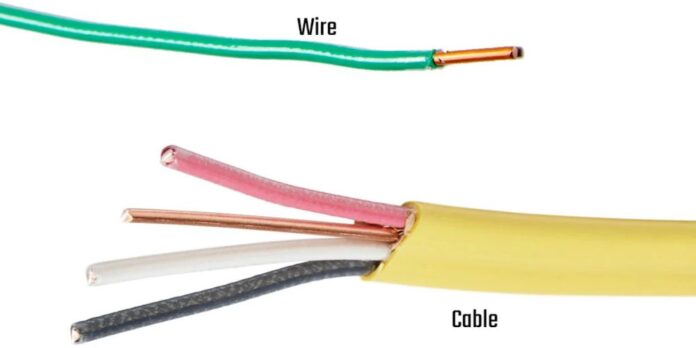It’s considered that electrical cable and wires are the same. There is a big difference between the two. Unlike a wire, a cable is made up of several separate conductors encased in the same sheath. They both carry electrical currents.
Almost everything is now powered by electricity, thanks to progress in technology. Regardless of whether we’re inside or outside, we need a steady, uninterrupted supply of electricity, which can only be provided by the proper type of electric wires and cables. Cables and wires are used in both the electrical and telecommunications industries to transmit and distribute power to our homes and businesses.
Low-Voltage Wire
Most circuits that need less than 50 volts use low-voltage wiring. Some common types are landscape lighting wires, sprinkler system connections, doorbell wires, speaker system wires, and thermostat wires. The sizes of wire are between 22 gauge and 12 gauge.
Most of the low-voltage wires are insulated and can be wrapped in cable sheathing or put together in twisted pairs, like lamp cord wire. It can only be used for low-voltage things. Most of the time, these are very small wires that are very different from standard wiring.
Low-voltage wires rarely cause serious shocks, but it’s still best to turn everything off before working on it.
Single-Conductor Wire
As the name implies a single-conductor wire has a single insulated conductor. It is the most common type of wiring for homes. For phase and earth identification, it comes in different colors. There are two kinds of single-conductor wire:
Single Stranded Wire
A single-stranded wire is composed of many thin wire strands that come together to make one conductor. Because the stranded wire makes the wires flexible, they can be used in situations where the wires need to be bent or twisted. Electricians prefer stranded over solid because it is more flexible and therefore easier to route through pipes in walls.
Single Solid Wire
A single solid wire has a solid core wrapped in plastic. The solid design makes for a better connection, but it is hard to bend or twist because it is stiff. If the conductor inside is bent too many times, it could get damaged and break. They are used in situations where the wires don’t need to move or bend.
Underground Feeder (UF) Cable
It is a type of non-metal-sheathed cable that is made to be used in wet places, like lampposts and street lights. The plastic sheath on NM cables is loose, while the UF cables conductors are wrapped in a durable layer of thermoplastic that gives them more flexibility and protection. Because the insulation is water-resistant, it can be used in damp places, such as to power a garden shed or lamp post. Most of them have a gray sheath on the outside. Running them underground is the best way to avoid poles and wires that are out in the open.
End Thoughts
Any home or business can look and be worth a lot more with the right electrical upgrades. You won’t believe how much a good electrical upgrade can change your home or business. Make sure that when you choose an electrical company to help you improve your home and decide to go so far as to need an electrical upgrade, the technician at the company has the knowledge and experience to guide you in choosing the right electric wires.










